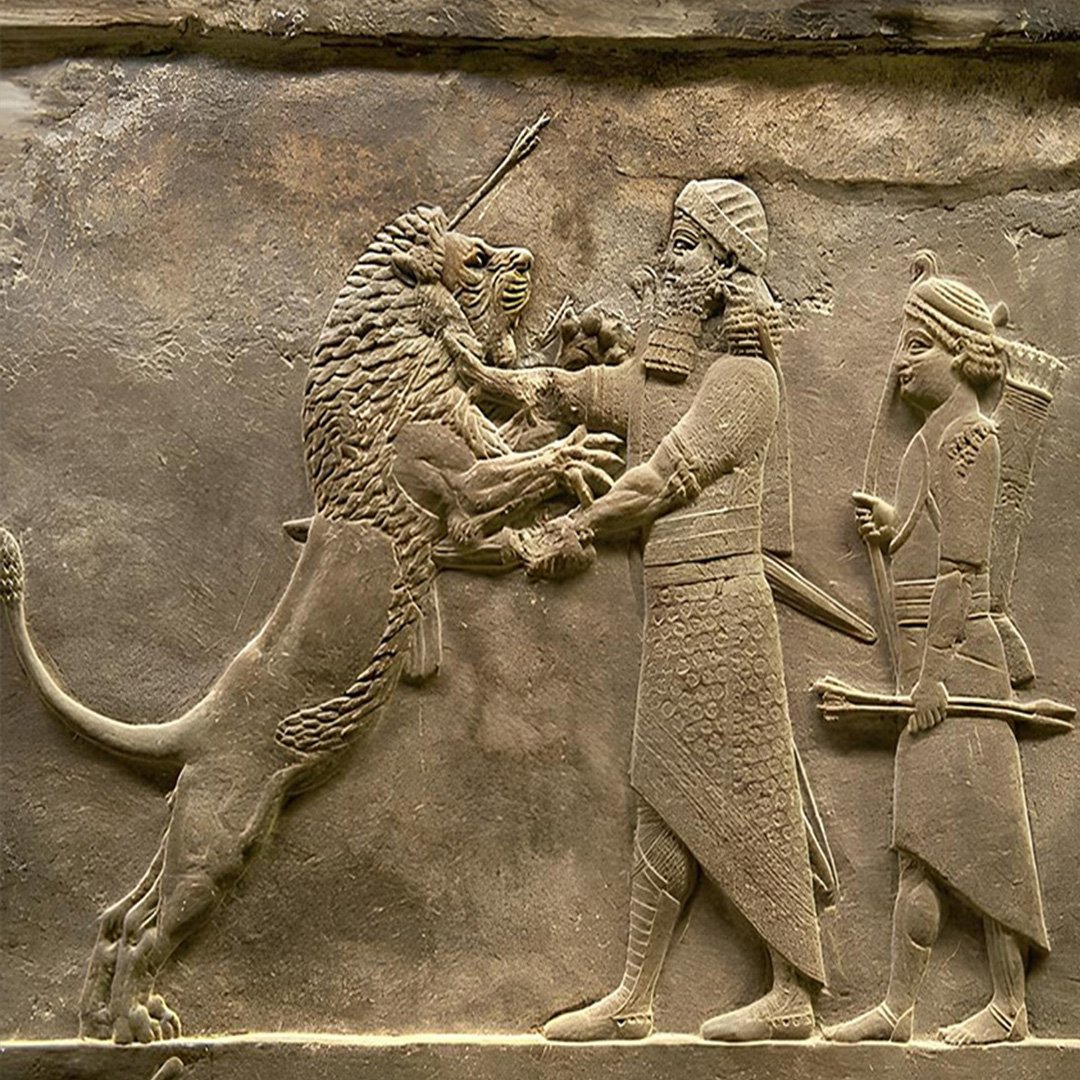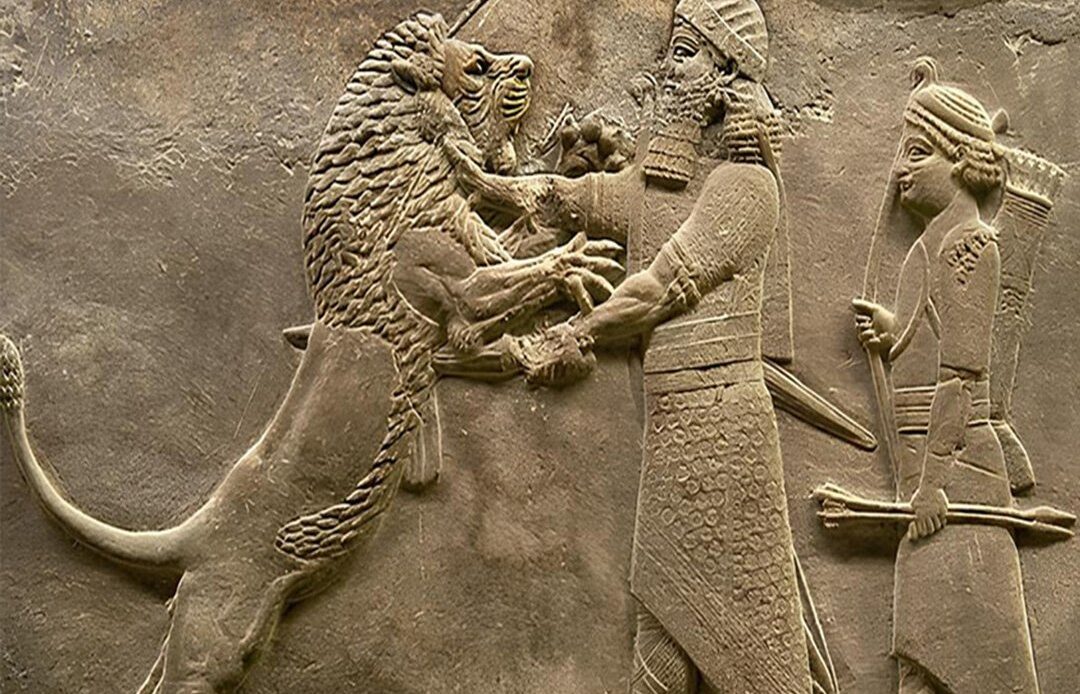In the heart of ancient Nineveh, now modern-day Iraq, lies a remarkable relief sculpture that has captivated historians and archaeologists for centuries. This intricate piece of art, dating back over 2,600 years, depicts the Assyrian king **Ashurbanipal** fearlessly slaying a lion, a symbol of courage and royal power. But what makes this depiction extraordinary is the writing stylus secured in his belt—a subtle yet profound representation of his unparalleled combination of physical strength and intellectual prowess.

### **The Scene: A King’s Courage Immortalized in Stone**
The relief shows Ashurbanipal in the act of killing a lion, a ritual that symbolized the king’s divine right to rule and his ability to protect his people from chaos. The lion hunt, a significant cultural event in ancient Assyria, was more than a sport; it was a demonstration of the king’s bravery and dominance over nature.
What stands out in this relief is the detail of a writing stylus tucked into Ashurbanipal’s belt. This small addition underscores the king’s dual identity—not only as a fearless warrior but also as a man of letters. It serves as a testament to his exceptional intellect and his devotion to the pursuit of knowledge.
### **Ashurbanipal: A Warrior and a Scholar**
Ashurbanipal, who reigned from 669 to 631 BCE, was one of the last great kings of the Assyrian Empire. Renowned for his military campaigns, he expanded Assyrian territories and secured the empire’s dominance in the ancient Near East. However, his legacy goes far beyond his conquests.
Unlike many rulers of his time, Ashurbanipal was highly educated and took great pride in his literacy—a rare skill among monarchs of his era. He amassed a vast collection of texts, including religious works, scientific writings, and epic literature, which would later form the famous **Library of Ashurbanipal**. This collection, discovered in the 19th century, is considered one of the most significant archaeological finds, offering invaluable insights into ancient Mesopotamian civilization.
### **The Symbolism of the Stylus**
The inclusion of the writing stylus in the relief is a powerful symbol of Ashurbanipal’s identity as a ruler who valued both strength and knowledge. In Assyrian culture, the ability to read and write was associated with divine wisdom and authority. By portraying himself with a stylus, Ashurbanipal emphasized his role as a protector of not only his people but also their intellectual and cultural heritage.
This fusion of martial prowess and scholarly dedication set Ashurbanipal apart from other rulers of his time. He embodied the ideal of a king who could wield both the sword and the pen, uniting the physical and intellectual aspects of leadership.
### **Legacy of Ashurbanipal**
Ashurbanipal’s reign marked a golden age for the Assyrian Empire, characterized by military strength, architectural advancements, and cultural flourishing. His library, which housed thousands of clay tablets written in cuneiform, is often regarded as the world’s first systematically organized library. Among its treasures was the **Epic of Gilgamesh**, one of humanity’s earliest literary masterpieces.
The relief sculpture of Ashurbanipal slaying the lion remains a poignant reminder of his multifaceted legacy. It symbolizes his unyielding courage in battle and his unwavering commitment to preserving knowledge for future generations.
### **A Timeless Inspiration**
The image of Ashurbanipal with a lion at his feet and a stylus at his side captures the essence of a ruler who mastered the art of balancing power and wisdom. His story serves as an enduring inspiration, reminding us of the importance of uniting strength with intellect.
As modern society continues to explore its ancient roots, Ashurbanipal’s legacy stands as a testament to the timeless values of courage, knowledge, and leadership. His life and achievements not only shaped the course of Assyrian history but also left an indelible mark on the broader narrative of human civilization.
